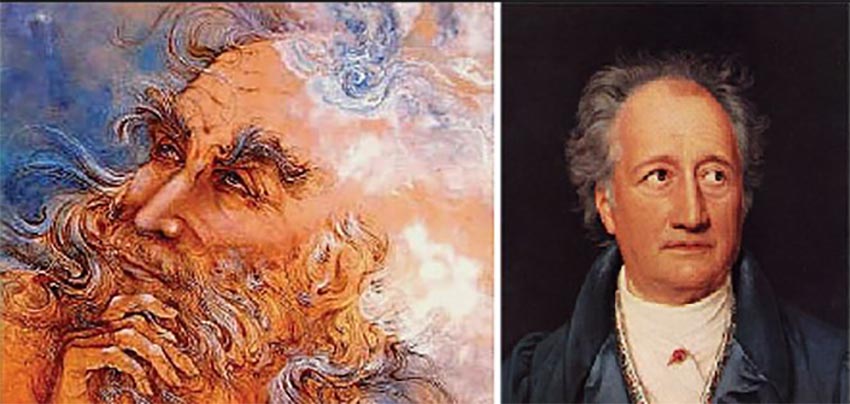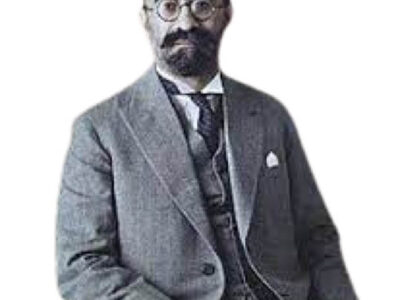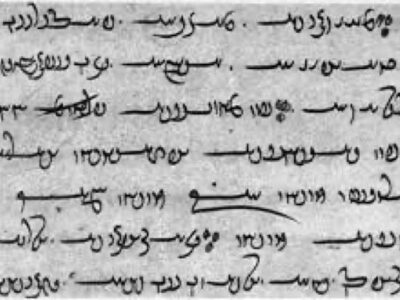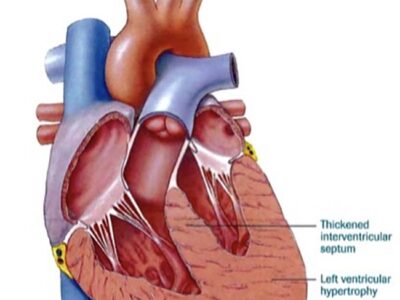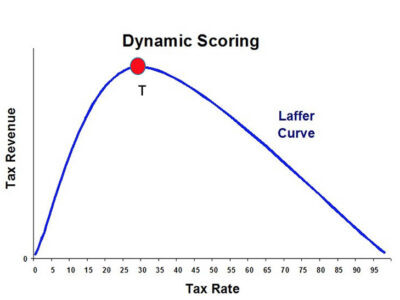by Mahsa Kalatehseifary

۳٫ Joseph Freiherr von Hammer Purgstall’s Hafez translation and their Reception
Hafez’s ghazals began to travel beyond the borders of their creator’s homeland via European travelers about three hundred years after his death. They were transcribed into Roman characters and translated into Latin by the Bodleian librarian Thomas Hyde (1636-1703) in Oxford at a date approximated at 1690. Hans Robert Roemer attributes the first translation of an Hafezian ghazal to a person named Meninski in 1677 in Vienna (no first name given), making Hyde’s later translation the second attempt. Tracing the footsteps of these two pioneers of Hafez translation working at the end of the seventeenth century, other European translators put pen to Hafez’s ghazals in French, English and German in the centuries to come.
Notwithstanding the sporadic translations of the ghazals by the turn of the eighteenth century, the most significant translation was completed by the Graz-born orientalist and diplomat Joseph Freiherr von Hammer Purgstall. His translation into German introduced Hafez’s complete Divan to world literature and triggered a noticeable number of renderings after its publication. Hammer’s translation fueled German interest in ‘oriental’ literature and triggered the Eastern Movement or “Orientalism” during the second half of the nineteenth century, resulting in the emergence of two additional complete three-volume translations by the German translator Hermann Brockhaus, (1854-60) and the Viennese translator Vincenz von Rosenzweig (1858-64).
Both of these emerged about a half century after the publication of Hammer’s version. Other significant German renderings on the list of Hafez translations include those by August von Platen (1853), Friedrich Rückert (1877), George Friedrich Daumer (1846) and Friedrich Bodenstedt (1877). Hammer’s noteworthy accomplishment in translating Hafez was praised by Goethe, who owed his acquaintance with Hafez and subsequently the emergence of his West-östlicher Divan to Hammer’s translation, which was passed on to him via his publisher, Cotta. (Otto and Witte 308) The section “Von Hammer” in his “Noten und Abhandlungen zum Besseren Verständnis” to the Divan is evidence of debt to the translator:
How in debt of this valuable human being I have become, my book proves it in all its sections. For a long time I was aware of Hafez and his poems, and the light that was brought upon me by literature, travel stories, other papers among others, did not give me a sense of intuition that this extraordinary man’s renderings bestowed on me.
In addition to his Hafez translation, Hammer continued to acquaint the German-speaking world with eastern literature and poetry through further contributions to this field in the early eighteenth century. During the course of his studies, Hammer founded and published eight volumes of the first European oriental periodical, the first four volumes of which were read enthusiastically by Goethe. Although Hammer’s main interest lay in Ottoman literature, his History of beautiful Persian Elequence (1818), in which he reviewed the work of two hundred Persian poets, is regarded as a valuable source for Persian literary history. This book reportedly served as a literary stimulus for the prose section of the West-östlicher Divan and helped Goethe to complete his Divan by supplementing it with the “Noten and Remarks for Better Understanding”.
Hammer resided twice in Constantinople between 1799 and 1806 as a diplomat, when several failed schedules left his wish to visit Persia unfulfilled. A short survey of the literary development of Constantinople and its subsequent influential impact on Hammer reveals his inspiration for embarking upon translating Hafez’s complete Divan.
Persian literature, in particular poetry, had considerable influence on the elite Ottoman poets of today’s Turkey from the middle of the fifteenth to the middle of the nineteenth century, such that their works were imitative of Persian classics. This period covers a major part of the Old or Asiatic School of Ottoman poetry, wherein Persian influence reached and maintained its highest level of prestige, as Elias John Wilkinson Gibb (1857-1901), the British orientalist, reports in the first volume of six in his book on the history of Ottoman poetry. Gibb refers to the impact of Persian poetry on Ottoman poetry during this time as the “Persianisation” of the latter, wherein the contemporary Persian School served as an influential model. A fight against “Persianism”, which was at first unsuccessful, gave rise to the New or European School of Ottoman literature in the middle of the nineteenth century.
To be continued…






